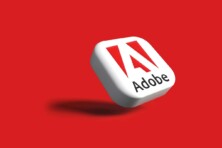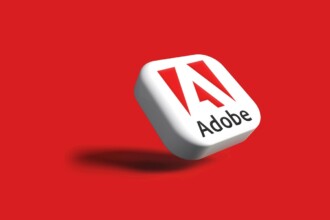In the payment industry, there’s a number of confusing terms. Automated Clearing House (ACH) is one of them. Thus, we’re aiming to clarify ACH payments for all those concerned

What is ACH payment? Source: pexels.com
Until the 1970s, writing checks was the common way of making a cashless payment. To process payments quicker and avoid human mistakes by check settlement first Automated Clearing Houses were created. They also eliminated the need for cash deposits, creating the concept of e-money.
ACH is an electronic funds transfer system. It’s one of the main ways to electronically move money and related payment information between accounts in the US. With this system, funds are electronically deposited in financial institutions, and payments are made online.
ACH payments are not instant. The funds are transferred between accounts/institutions a few times a day in batches. Delivery of those funds may take several business days. At the same time, most types of ACH payments may arrive later the same business day.
Types of ACH payments
The Automated Clearing House (ACH) Network in the US is used for payroll, direct deposit, tax refunds, consumer bills, tax payments, and many more payment services.
ACH transactions consist of:
- ACH debit – the payer gives the payee permission to take payment from their account whenever it becomes due. E.g. a customer who pays recurring monthly fees to a service provider, automated mortgage and utility payments.
- ACH credit – the payer triggers the funds to be sent to the payee. E.g. employers depositing payroll to employees’ checking accounts, insurance companies distributing payouts, or the government paying social security benefits and tax refunds.
The most common types of ACH payments include:
- Direct Deposit is the deposit of funds electronically into a bank account (opposite to paper checks or cash). Salaries, social security benefits and tax refunds are examples of payments commonly made through direct deposit. The Electronic Fund Transfer Act (EFTA), also known as federal Regulation E, permits employers to make direct deposit mandatory, as long as the employee is able to choose the bank that their wages will be deposited into. Banks, credit unions and employers do not charge employees to receive a direct deposit to a bank account. As many as 94% of respondents to 2020 American Payroll Association survey use this method to receive their pay or government benefits.
- Split/Allotment Deposit – a designated amount of money is automatically deducted from the paycheck to pay for outstanding loan/mortgage or a set amount/percentage of the pay automatically goes into a savings or investment account. This type of payment may work only along direct deposit.
- Direct Payment – is a form of electronic bill payment for consumers that allows them to pay their utility bills for services or products over the Internet through their banks. This type of payment also allows service providers to automatically receive regular fees from their customers.
Same-day ACH
ACH payments are transferred between institutions in batches. Those transfers may be scheduled either once a day or a few times a day. Efforts are increasingly made to boost the speed of ACH transactions. It used to take about 3-5 days for a payment to clear. However, same-day ACH sped up the process.
In 2016, same-day ACH started changing the payment landscape. Firstly, they covered only credits, but debits soon followed the lead. ACH transactions started getting processed several times daily, resulting in settlement requiring only a few working hours. The participating financial institutions have a certain deadline to submit the ACH payment files so that they can be cleared the same day. This deadline has evolved over years too.
Currently, Same Day ACH files have to be submitted until 4:45 p.m. ET (1:45 p.m. PT). The new Same Day ACH processing window became effective on March 19, 2021. The precise timing of ACH file processing schedules is determined by each ACH Operator.
Sometimes an ACH hold may be placed on your bank account, meaning a payment you’ve authorized is about to be deducted or deposited. ACH hold means that the ACH entry is sent to your bank, the bank is aware of the transaction, and after checking, the payment amount will be realized.
Network volume
Although ACH payments are not real-time, their use is not less common than instant payment systems. According to the National Automated Clearing House Association (NACHA), payment volume on the ACH Network experienced record growth in 2020 as the pandemic accelerated the nation’s shift to electronic payments. The 26.8 billion payments made on the ACH Network in 2020 is an increase of 8.2% over 2019, while the value of those payments, $61.9 trillion, is up 10.8%.
Moreover, the network continued growth in 2021. Similar growth rates were observed in Q1 and Q2 this year (11.2% and 9.9% respectively). The record growth of B2B payments conducted via ACH in 2021 deserves particular attention. In the second quarter, there were 1.3 billion B2B ACH payments, a 28.7% increase over the same time in 2020. Some people may link that to the pandemic slowdown which may have lowered B2B transactions volumes. However, back in 2019, 2.94 billion ACH B2B payments were made in the first nine months, meaning less than 1 billion for the quarter. Thus, the growth compared to pre-pandemic levels is even more impressive.
ACH is the prime vehicle for B2B and mass payments because of the quick delivery, low fees, and overall reliability.
Regulation
The Reserve Banks and Electronic Payments Network (EPN) are the two national ACH operators. Both of these systems process all of the ACH transactions in the country.
The Federal Reserve System (FRS) is an independent governmental entity serving as a central bank. It conducts the nation’s monetary policy and regulates all its banking institutions. There are 12 regional Federal Reserve Banks in the US. Each of them focuses on the particular geographical zone. Their activity is coordinated by the New York Fed.
The EPN is owned and operated by the Clearing House Payments Company, a private corporation owned by some of the largest commercial banks in the country. It handles electronic funds transfers for the private sector.
The ACH file format is determined by the National Automated Clearing House Association (NACHA). This organization establishes clear guidelines for each network participant, defining the roles and responsibilities of financial institutions.
Each participating bank has slightly different rules regarding ACH transfers. Banks establish their own daily and monthly transfer amount limits. They may range from $2000 to $25000 per day and vary depending on your account history. The average ACH transaction fees are $0.20-$1.50 per transfer. Yet, they vary greatly from one financial institution to another.
How it works
Besides the obvious participants of the ACH transaction (i.e. a customer and a merchant/service provider; a governmental agency and a receiver of social security benefits), there are other parties involved behind the scenes.
When you read about ACH, you may come across abbreviations like ODFI and RDFI. DFI here stands for a “depository financial institution”. In simple words, DFI is a bank, credit union, or savings and loan association. ODFI means the originating institution (which represents the payer) while RDFI is a receiving institution.
When individual and business customers initiate payments, ODFI records payment information within specific files.
An ACH file is a fixed-width, ASCII file, where each line has 94 characters. Every character string is known as a “record” and is composed of various “fields”. Those fields must come in a specific order. The ACH files carry information about the routing number of the originating (sending) bank, a date time stamp, as well as the name of the originating bank and company/customer’s name, the transaction type (debits and/or credits), purpose of transaction entries, receiver’s account name and account number, transaction amount etc. This record also specifies the date the transactions are supposed to post in the receiver’s account. Files may include a few batches i.e. transactions coming from different sources.
Businesses that pay their employees via direct deposits or make direct payments to their partners and suppliers, need to have IT resources to create and automate payment files, properly implementing the ACH solution. If a company doesn’t employ IT professionals, it needs to use corresponding accounting software or ACH API.
ACH operators (EPN or Reserve Banks) receive files of ACH payments from ODFIs in multiple batches. Operators edit and sort the incoming payments, deliver the payment information to RDFIs, and settle the transactions by funding appropriate accounts. Until recently, EPN concentrated on recurring ACH payments only, but now it can handle one-time debit transfers as well.
The Reserve Banks and EPN operate independently unless they process interoperator ACH payments where the sending and receiving financial institutions are served by different operators.
SEE ALSO:









